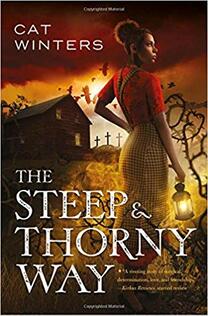In graduate school I loved hearing about Melanie's experiences as a teacher. I especially loved hearing about how she taught Shakespeare. In this posts she gives us just a hint of her expertise. Do Shakespeare and YA belong together? You bet.
Shakespeare and Young Adult Novels
...we know what we are, but not what we may be.
Hamlet 4.5
| The room is crowded with students on couches, in chairs, in bean bags. They each have a copy of Gareth Hind’s Macbeth. Caleb says, “So the witches, they look and kinda act evil but really it’s Macbeth. He makes the choices to do what he does.” Kim nods and adds, “The witches get blamed for a lot because they are ugly and not part of the town but Macbeth makes the choice to kill his king.” The discussion continues for a while as the students try to figure out who is really evil in Macbeth. Finally, Marcus asks, “So this graphic novel is based on a play by Shakespeare, right?” I nod. Marcus continues, “I thought it would be harder to understand. I don’t know if it was that it was a graphic novel or whatever but this made sense.” Another student said, “This story sounds like something my grandma would tell me. Like ‘don’t talk to bad people or you’ll be tempted to do wrong.’” |
| My formal, academic introduction to Shakespeare happened in eighth grade when my class read Romeo and Juliet. My informal introduction to Shakespeare occurred long before that. I met him in my grandfather’s appropriated stories, my grandmother’s gentle retellings, and the off-hand quotes and allusions of family members. It didn’t dawn on me that my grandfather couldn’t have actually known Shakespeare or that my uncles hadn’t met him for a drink the night before. He was quoted in daily settings and general conversations. I heard stories, lines, phrases, that as my exposure to Shakespeare grew, I recognized. The rhythms of the lines of his plays or sonnets did not stand out as different from the drawling rhythms of my family’s speech. So when I came to Shakespeare as a high school student and as an English major in college, it was like greeting an old friend met first on my family’s porch. |
| Winter’s (2016) The Steep and Thorny Way is a contemporary retelling of Hamlet. In this version, Hamlet is now a young woman, Hanalee Denney, who loses her father Hank and watches her mother remarry. Initially, Hanalee believes her father died in an accident caused by a drunk teenager. She then learns that he may have been poisoned by the doctor taking care of him—the same doctor who is now her stepfather. One of the powerful components of this novel are the questions raised around race, identity, and prejudice. Because Hanalee is the daughter of a white woman and an African American man, she is confronted by daily prejudices, the lack of legal support or rights, and the dangers of the KKK. Hanalee must ask the ghost of her dead father for clues and help and negotiate the challenging issues around race and prejudice in the 1920s. The gender shift and the change in setting provide a different way of looking at the play and provide insights into the decisions a grieving child makes when searching for answers about the death of a parent. |
Bibliography
Jay, S. (2011). Juliet immortal. New York: Delacorte Press.
Johnston, E. K. (2016). Exit, pursued by a bear. New York: Dutton Books for Young Readers.
Klein, L. (2007). Ophelia. New York: Bloomsbury USA Children’s Books.
Lester, J. (1998) Othello. New York: Scholastic Paperbacks.
Marion, I. (2010). Warm bodies. New York; Atria/Emily Bestler Books.
Marsden, J. (2009). Hamlet: a novel. Summerville, MA: Candlewick Press.
North, R. (2016). Romeo and Juliet. New York: Riverhead Books.
North, R. (2016). To be or not to be. New York: Riverhead Books.
Ray, M. (2011). Falling for Hamlet. Lebanon, IN. Poppy, an imprint of Hatchette Book Group.
Shakespeare, W., & Gabel, C. (2010). Romeo & Juliet & vampires. New York; Harper Teen.
Winters, C. (2016). The steep and thorny way. New York: Amulet Books, an imprint of Harry N. Abrams.
Until Next time.










 RSS Feed
RSS Feed